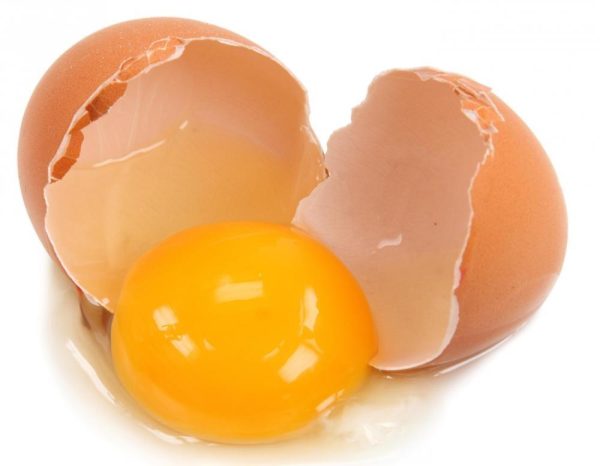The Price of a Pet
“If you don’t own a dog, at least one, there is not necessarily anything wrong with you, but there may be something wrong with your life.” – Roger Caras
Man’s best friend, Fido, the family dog. An integral part of the household unit. Nearly everyone agrees that the only thing wrong with dogs is that their lives are too short. What, however, are you doing for your family pet or personal pup to help extend their life, and improve their vitality?
You may not know this but dogs, along with many other pet species, are obligate carnivores. This means that the vast majority of a canine’s diet should be composed solely of flesh, organ and bone (FEDIAF). As far removed from the mighty wolf your tiny yipping chihuahua may seem, their dietary requirements are quite similar.
Most pet foods, especially highly processed kibbles, are between forty-six percent and seventy-four percent carbohydrates (AAFCO). Ancestrally, dogs and their relatives consumed at most a diet with only fourteen-percent carbs (NFDA). Funnily enough, the “keto” diet is much more appropriate for a dog rather than a human.
Carbohydrates are a cheap replacement for protein, and the rules regarding which proteins make up the majority of the content of dog kibble may surprise you. Many recipes include high amounts of pea proteins, a biologically inappropriate substitute for fleshy, meat-derived proteins. Kibble after all was made for the convenience of the owner, not the health of the pet (Paws of Prey).
The rules on wording may also be a shocker. Phrases like “recipe” or “formula” indicate that only minuscule amounts of the title ingredients must be used. A dry kibble with the title “Duck and Lamb Recipe” needs only to contain a total amount of up to twenty-five percent of the wet mass of that ingredient.
What that ingredient may look like as well is interesting as well. Duck can mean “whole duck” which is biologically appropriate or it can even mean “duck bone meal” which is just ground up duck bones. Seemingly trustworthy brands even, like “premium” Blue Buffalo was recently defeated in a lawsuit, “charged with false advertising due to its use of chicken feathers and other low quality ingredients,” instead of meaty bone and organ (PetFoodRecallAlert).
Another issue too, with kibble, is its moisture content. Dry food contains on average, ten to twelve percent moisture, (Pet Food Institute) which is much too low for the requirements of dogs. Chronic dehydration, which can happen as dogs are not too biologically motivated to drink, as they should be receiving the bulk of their moisture intake from the raw meats they ingest. A single chicken breast for example, contains over thirty-seven percent of its weight in water (The Standard).
Chicken is a big source of contention however, as well. Due to the lack of variety in the farming industry and the constant infusion of chicken into the American dog, many canine friends have developed genetic allergies to chicken as a protein source. This alone has been argued to be a primary factor in the many health issues commonly seen in the household dog such as skin irritation and low energy.
From all of this, you may now be thinking, “What even CAN I feed my dog?” Well, that’s a complicated question too. Pet nutrition has recently become a booming industry and many self-proclaimed “experts” have said they have found the perfect solution to that problem.
After doing research on this topic, I personally was bombarded with advertisements claiming that feeding your dog solely raw eggs was a more nutritionally sound option than standard kibble. I cannot stress enough how untrue this statement is. If you take anything from the following thoughts, let it be that you should always consult a Board Certified Veterinary Nutritionist, or a Doctor of Veterinary Medicine with knowledge of pet nutrition before making any major switches (changing any weight greater than twenty-five percent of the meals-per-day food mass), and to conduct all switches, even just those between kibbles, SLOWLY. It should take at least a week before you get to chuck the old bag and feed solely the new brand.
There are many ways however to enhance your dog’s diet. Adding moisture of any kind to any kibble is a great way to immediately increase the digestibility of a dog’s food. Liquids like raw milk, kefir (processed fermented milk) or a variety of bone broths can really promote healthy digestive function in your furry friend.
If you are thinking of a greater overhaul, I recommend looking for a limited-ingredient-recipe kibble without chicken or pea protein, with a low carbohydrate content (less than twenty percent) and a high protein content (greater than forty percent). (FEDIAF optimal levels). You do need to be careful of grain-free options however as some preliminary research suggests that they may not support healthy heart function in household pets.
Myself, I feed my personal pup (a Golden Retriever) sixteen ounces of Essence Limited Ingredient Ocean and Freshwater Dry Dog Food. I am comfortable with the nutritional parameters and feel like it is the best choice for my little guy. The price tag, however, is hefty. It costs me almost one hundred dollars for a twenty-five-pound bag that lasts only just under a month. It works for me however as my dog is my major expense and I don’t drive a car or spend much money “going out.”
I of course recognize the financial privilege in this choice, but I do believe that it saves me money in the long run as I don’t have to worry as much about vet bills for digestive issues and common ailments caused by carb-heavy or otherwise inappropriate food. Maximus’ coat is extra shiny too, which is just icing on the cake.
There is something else I add to his food too, something that I believe all North pet owners should be adding to their pup’s meal. Products from a local small business Tapia Raw Meats. This is not a paid endorsement, (I wish it was), but this newly opened little gem in the DeAnza Center is a truly affordable way to infuse raw meats into a dog’s diet. You heard me right, RAW MEAT.
Now, you are probably wondering about the risks of salmonella and a million other bacteria and parasites. But, would you believe me if I told you that raw pet food is actually held to a higher standard than raw “people food”? It is. Raw “people food” is expected to be cooked so there are greater permissible levels of pathogens. It is a very low number but they still can be present.
Furthermore, a recent study by FEDIAF showed that over seventy-nine percent of all healthy dogs contain salmonella in their gut. This, in dogs, is an easily managed and non-contagious bacteria.
My pup, personally, gets four to eight additional ounces a day of raw meat. He gets raw smelts (which do make the house smell disgusting on prep days– I now prepare and feed those outside), turkey hearts, lamb grind and duck grind. On top of that, each week he enjoys, and spends literal hours on chewing a frozen raw cow ear (fur and all– it acts like a pipe cleaner through the intestines), two frozen raw lamb ears as well as a half-turkey neck.
Aside from the purely nutritional benefits, the other health benefits are countless. Bones and chews help to clean the dog’s teeth and stave away dental disease, a leading cause of death in pet canines (AAFCO). Now, for the disclaimers, NEVER feed your dog cooked bone. Raw is fine, but a cooked or even dehydrated bone’s composition will be changed and can splinter and kill your dog. Cooked bone is a BIG no-no.
Now, in a perfect world, I would be feeding my dog a purely raw diet, balanced carefully and containing ten different protein sources– at least. I’d get fresh orders in from Raw Feeding Miami and from Hare Today and my boy would feast on turkey testes, cow eyeballs, and goose drumettes. Alas, however, this is not a perfect world. I don’t have the funds to order from those online places twice a month, or the freezer space to store the bounty the mailman would bring.
In a little less perfect world, I would feed a premade raw diet, but still, the same barriers remain and the world is far from perfect.
Now, all of that just covers nutrition. Diet makes up a big part of a dog’s health, and a big part of the puppy’s price tag, but it is not the only element that keeps your pet’s motor running. Enrichment and mental stimulation is another huge factor in the longevity of your best friend. Even though my guy has a job (as a medical alert and mobility service dog), I like to make sure I’m wearing him out. He has limitless energy and can play fetch all day!
There are simple ways to enrich your dog’s life. From scatter feeding their kibble in the grass or across a brick divoted surface, anything that gets the dog’s nose going and brain working really help to bust boredom. There are entire groups and a million different ideas on Facebook, Pinterest and essentially everywhere else on how to make your puppy happier and more stimulated.
Teaching skills and tricks also really can enrich the life of a pet. The American Kennel Club also now offers titles you and your dog can earn online, in the Trick Dog category. Check out the AKC website (AKC.com) for info on how to title in Trick Dog Skills. All dogs regardless of breed can participate. Think of how enriched your pup will be and how proud you will be of your little four-legged friend winning ribbons!
Basic obedience classes are also great places to start working on skills. The sky’s the limit with what you can teach your pooch! Affordable options exist, and events like the “It’s A Dog’s World: YAPPY HOUR” at less than four dollars per session are great alternatives to the cesspool that is a public dog park, rife with ill-tempered, unvaccinated dogs.
Speaking of vaccinations as well, your dog needs routine medical care and will likely need vaccinations every six months their entire life. The puppy series, which can be easily found at your vet’s office or even online, consists of a series of vaccines, in order of
Canine Distemper, Parvovirus,
Canine Distemper, Adenovirus, Type 2, Parainfluenza, Parvovirus, Canine Coronavirus,
Canine Adenovirus Type 2, Parainfluenza, Bordetella, Bronchiseptica,
Canine Distemper, Adenovirus, Type 2, Parainfluenza, Parvovirus, LCAN-LGRIP-LICT-LPOM,
Canine Adenovirus Type 2, Parainfluenza, Bordetella, Bronchiseptica,
Canine Distemper, Adenovirus, Type 2, Parainfluenza, Parvovirus,
LCAN-LGRIP-LICT-LPOM and
Rabies,
all delivered over the first six months of your puppy’s life, your little friend will need a Bordetella vaccination every six months, the DHLPP vaccination every six months, and a Rabies shot yearly. Of course, consult with your veterinarian for a personalized vaccination plan.
At the end of the day though, before everything else kicks in, you must first find a puppy or dog. Please adopt and shop responsibly. If you are adopting from a shelter know that you are committing for the lifetime of the dog, and if you are buying a puppy from a breeder, look for BOTH parents to be AKC registered, Titled, and to have passed PennState or OFA hip/elbow/eye tests.
Now, all said and done, the cost of a pet responsibly raised is enormous, but the love you will get in return is even greater.






